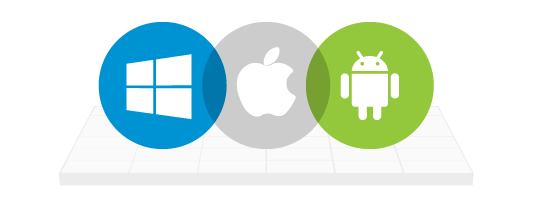Mobile applications are much more like people. Though they are all bound by some universal qualities in their layout, each individual app tosses in its own spice of authenticity to make it stand out from the rest of the crowd. The difficult task is to choose the best framework which is best suitable for your app design and features for the mobile app development. The trickiest task for deciding on which framework you want to partner with is evaluating its caliber of adaptability to your design and rhythm whilst assembling a mobile app. Here are some points that you may want to take in consideration over while working on your next mobile app project.
Programming Languages and User Interface and Themes
The language of a program is the thing that weaves the fabric of the undertaking ahead. Without an unmistakable coding grouping, you should use rocks and stones to develop your structure. Utilizing as a part of in house designers and developers is one approach to build up an application. Those architects and software engineers will as of now have a set up inclination for outlines and projects. Choosing a framework that uses the tools and languages your programmers know is of utmost importance if time is of the essence. Consider the degree of difficulty for app modifications and upgrades as you execute your design and programming.
These are both design considerations that will need your input throughout the design process. A theme is a design element that is carried out throughout the application on every screen of the application. User interface and user experience are often plastered together and they consider both the effectiveness of format and the smoothness of the experience. Both themes and UI/UX at last serve to pacify the end user, your client, in his/her cooperation with the application framework. Like an excellent engineering design, UI lays out the diagram of the structure and secures its soundness, UX cuts and hues the outside of the structure, and a topic is delivered when the finished app is reached on the end stage.
Application Responsiveness and Documentation
We don’t live in the dial-up era anymore. The speed at which mobile apps load and process information is accelerating at a lightning speed.One constant figure in all this are the customers that you will attempt to contact. They need everything cut snap. People have always been, are, and always will be busy. A framework is just comparable to the documentation that it encapsulates. Consider all the update and alteration conceivable outcomes for the application in a future date. The simplicity of updating the application and the convenience of the system will without a doubt be an overwhelming undertaking for your group if the documentation does not show what you can do with it.
What is the Best Framework for a Mobile App ?
Before you consider the best framework for a mobile application, you will require key learning of the objective of your application and how it goes about in executing it. Frameworks compatibility with certain types of applications range from shopping front-ends at an online store to music recording and editing to communications between people or businesses. Regardless of what sort of use you have, there is an approaching structure that will best suit its motivation. Before selecting a framework you have to sort out the points above, however you might likewise need to take a look at other accessible frameworks to check whether one fits your application.
The following are some of today's most well-known titles:
- Appcelerator Titanium: Gives you the capacity to make a transformative portable application utilizing an open source application system for making applications for a few stages at one time.
- Sencha Touch: Another HTLML5 application structure for creating applications for numerous stages. In the event that you need the same look and feel crosswise over stages then this is the system to utilize.
- Ionic: Used to create lovely open-source front-closures utilizing a half and half portable and web innovation with HTML5.
- Mobile Angular UI: Helps you make intuitive versatile applications with responsive media inquiries, overlays and sidebars that are frequently disregarded in a structure, and AngularJS mandates that make magnificent versatile client encounters.
- Intel XDK: A cross stage structure for Linux, Windows, and Mac engineers. They incorporate various layouts and UI structures to kick you off. They may have a simpler move and customize approach yet this strategy leaves a considerable measure of unused code lying about.
Finding a mobile application framework for your situation may be the hardest stage of the game when it comes to your new application.Remember that if you want to enjoy the view of your new house, you will have to size out your windows, curtains, and blinds first.
Author Bio -Mick Martin is a senior mobile application developer working with NextTechnoSoft Company which offering mobile app developers for hire for any mobile platform, Mick like to take changes especially for game and ecommerce application development.
